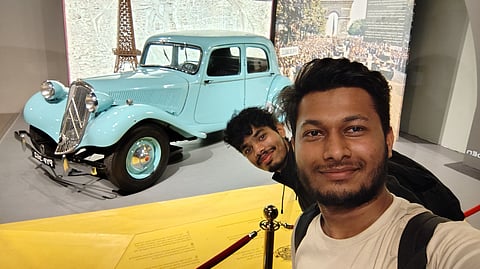While developing PhotoSage, these students' top priority was user privacy
How was PhotoSage developed, and what were the challenges you faced?
PhotoSage began as a prototype I built during a hackathon organised by Meta Dome, which focused on image recognition and related topics. I’d had the idea for a while, but the hackathon allowed me (Ayaan) to develop a fully functioning algorithm.
The prototype won second prize, which motivated me to take it further and bring it to users. However, I lacked mobile development experience, so I teamed up with Aatmik. Our trip to Mysore further reinforced our resolve to build it.
Aatmik focused on integrating the algorithm into an iOS app, but we faced challenges — early versions had low accuracy, like showing house images when searching for a car. Through Aatmik’s research and optimisations, we improved it significantly.
After rigorous testing and internal feedback, we released the first version on February 6th.
Why did the you prioritise user privacy in the development of this app?
From the start, we knew PhotoSage would target iOS users, who value security and privacy highly. As a new app, we didn’t have the established trust that companies like Google or Apple have with their users.
To earn that trust, we prioritised security and privacy in our development process. We wanted users to feel confident that their data was safe with us, which was critical for building a loyal user base.
How do the students plan to scale this innovation?
PhotoSage isn’t limited to simple image searches. We plan to expand into all kinds of media search — audio, documents, in-video search, 3D models, and more — handling massive datasets to help companies manage big data without manually tagging everything. We plan to introduce premium features as part of a subscription-based revenue model to support this growth.
This will allow us to keep improving the app while offering advanced tools to users and businesses who need them.



